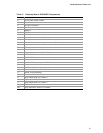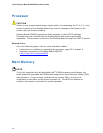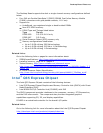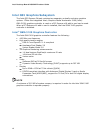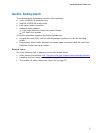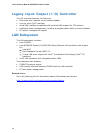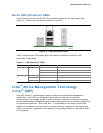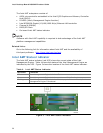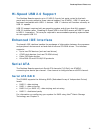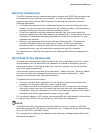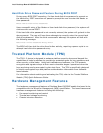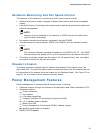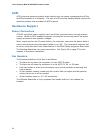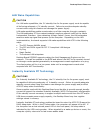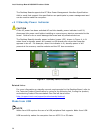Desktop Board Features
21
Hi-Speed USB 2.0 Support
The Desktop Board supports up to 12 USB 2.0 ports (six ports routed to the back
panel and six ports routed to three internal headers) via ICH9DO. USB 2.0 ports are
backward compatible with USB 1.1 devices. USB 1.1 devices will function normally at
USB 1.1 speeds.
USB 2.0 support requires both an operating system and drivers that fully support
USB 2.0 transfer rates. Disabling Hi-Speed USB in the BIOS reverts all USB 2.0 ports
to USB 1.1 operation. This may be required to accommodate operating systems that
do not support USB 2.0.
Enhanced IDE Interface
The board’s IDE interface handles the exchange of information between the processor
and peripheral devices such as hard disk drives and CD-ROM drives. The interface
supports:
• Up to two IDE devices (such as hard drives)
• ATAPI-style devices (such as CD-ROM drives)
• Older PIO Mode devices
• Ultra DMA-33 and ATA-66/100 protocols
Serial ATA
The Desktop Board supports six Serial ATA channels (3.0 Gb/s) via ICH9DO,
connecting one device per channel. One channel is configured as an eSATA channel.
Serial ATA RAID
The ICH9DO supports the following RAID (Redundant Array of Independent Drives)
levels:
• RAID 0 - data striping
• RAID 1 - data mirroring
• RAID 0+1 (or RAID 10) - data striping and mirroring
• RAID 5 - distributed parity
For information on configuring your system for RAID using Intel
®
Matrix Storage
Technology see Chapter 4.



